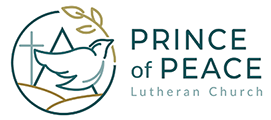
Can two, seemingly opposed, realities be true at the same time? In a world as complicated as ours, is it any wonder that we prefer the clarity of simple binaries? It’s day or it’s night. It’s black or it’s white. It’s water or it’s dry land.
If simple clarity is the goal, how would we define dawn? At what point does night turn to day? If it’s only black or white, what about all the very necessary shades of grey? If it’s water or dry land, how do we explain the vibrant coastal bogs along the shores of Lake Superior?
To make sense of any of these phenomena that exist between the binaries, we need to hold onto these seemingly opposed realities at the same time. Dawn is both night and day. Grey is a lighter black, just as it is a darker white. The soggy shore is simultaneously water and earth in comparable measure.
Wrestling with this conundrum of how to grasp onto two seemingly opposed realities is the work of philosophers and dreamers and artists, those who help the rest of us enter more deeply into our own stories. And Oct. 31 is the day we remember and honor the contributions of one such philosopher-dreamer-artist whose insights over 500 years ago led to a revolution that continues today.
One of the key understandings that sits central to the story of Martin Luther, is that those who are loved by God, will always exist within the tension of holding simultaneously onto two seemingly opposed realities. We will be pushed and pulled by these opposing forces as if tied to horses headed in different directions. Luther used a Latin phrase to describe this tension – simul iustus et peccator, translated as simultaneously justified and sinful or, more familiarly, being both saint and sinner.
The theologians call this the “simul” that sits at the foundation of our reformed Christian tradition. This “simul” is us. Sinner and saint. Broken and beautiful. Luther uncovered this simultaneous reality of two opposing truths in the pages of scripture, passages like the one we read earlier from Paul’s letter to the fledging church in Rome. Paul was offering his insight on the benefits of the hardships experienced by these early Christians. Benefit and hardship – another simul, another set of opposing truths.
Our task on Reformation Day and in all the days to come, is to keep God’s vision before us. God has and will always be steadfast for us. We will falter, we will fail. We’ll take bad advice, and we’ll take the wrong path. We are sinners after all.
And, God loves us too much to leave us this way. God came into this world to set us free and the burdens we carry are lifted, the mistakes we make are forgiven, and when we fall short, God will take us the rest of the way. We are saints too.
Simultaneously, sinner and saint. Dawn has come and the light is transforming the darkness. The grey is so glorious. The water and the earth are now wine and bread, simultaneously one body. Broken and beautiful.
May God’s peace come to you today. -Pastor Peter
Let us pray… Almighty God, gracious Lord, we thank you that your Holy Spirit renews the church in every age. Pour out your Holy Spirit on your faithful people. Keep us steadfast in your word, protect and comfort us in times of trial, and bestow on the church your saving peace. Amen
